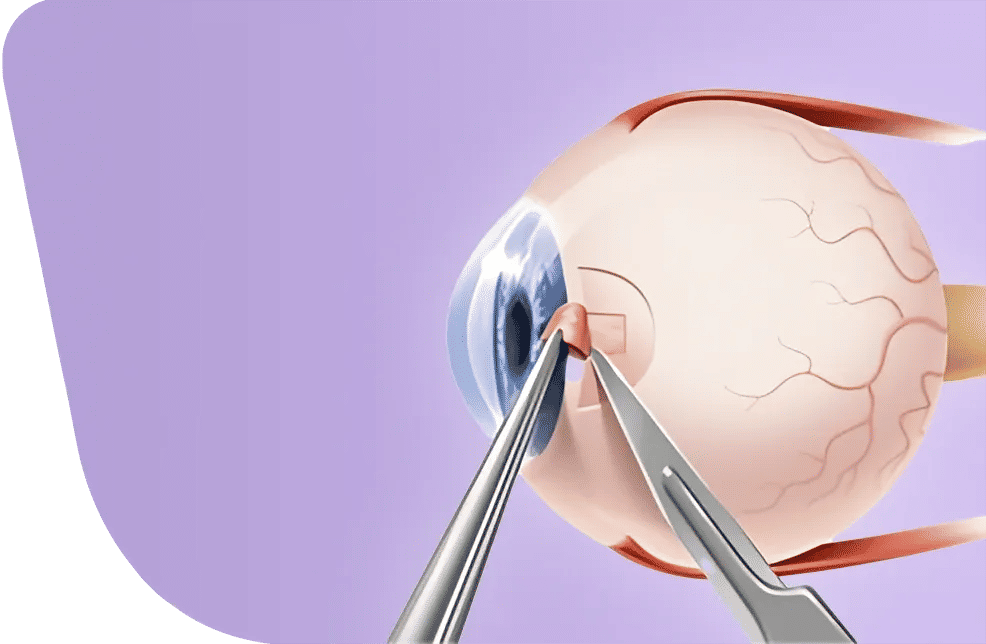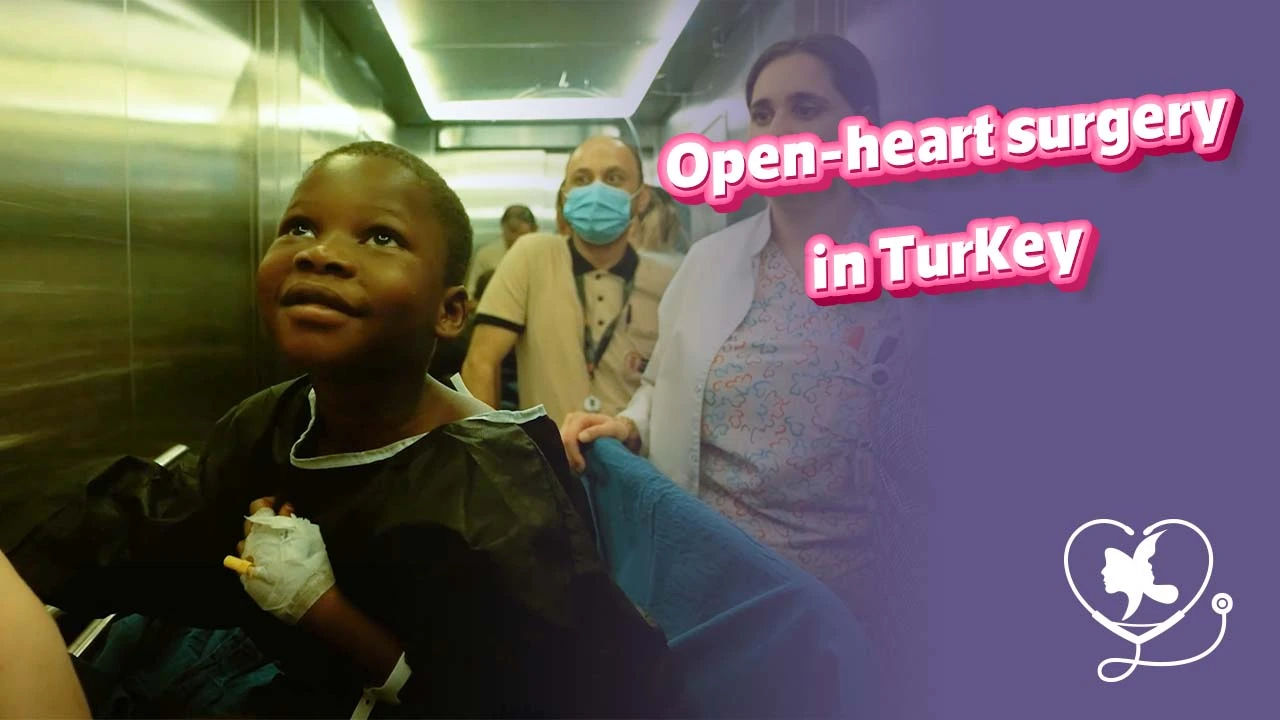- - Intraocular Lenses (IOLs) at Glance
- - What Are Intraocular Lenses (IOLs)?
- - What is Intraocular Lens Implantation?
- - What Are IOLs Used For?
- - Benefits of IOLs
- - Best Candidates for IOLs
- - Types of Intraocular Lenses
- - Tips to Choose the Best IOL for your needs
- - What to Expect During the IOL Implantation Procedure?
- - Recovery after IOL Implantation Surgery
- - Are IOLs safe? Possible Risks and Complications
- - How Much is the IOL Implantation Surgery?
- - IOL Surgery in Turkey Where Quality Meets Affordability
- - Restore Clear Vision with Premium IOLs at Turkey Luxury Clinics
- - FAQs About IOLs Intraocular Lens
Intraocular lenses (IOLs) are artificial lenses implanted in patients’ eyes to restore clear vision, most commonly after cataract removal, and sometimes to correct refractive issues.
They come in a variety of types, from standard monofocal lenses for distance vision to advanced options like multifocal, toric, and Light-Adjustable Lenses, which are called smart lenses and offer personalized visual correction.
Discover with Turkey Luxury Clinics how IOL implantation works, what recovery feels like, and how costs vary worldwide—helping you make a confident choice for long-lasting, sharper vision.
Considering IOL surgery abroad? Turkey stands out for its advanced eye clinics, experienced surgeons, and patient-centered care, all at a fraction of Western prices.
Intraocular Lenses (IOLs) at Glance
- IOLs are artificial lenses that replace the eye’s natural lens.
- Restore clear vision after cataracts or refractive issues.
- Main types: Monofocal, Multifocal, EDOF, Toric, Light-Adjustable.
- Monofocal is standard, Multifocal is premium,Toric corrects astigmatism.
- Advanced techniques include Phacoemulsification and Femtosecond Laser.
- Anesthesia: Local for quick, comfortable surgery.
- Procedure Time: 15–30 minutes per eye, outpatient basis.
- Recovery: Return home the same day; resume normal life in 24 hours.
- Results: Clear vision within days; full stability in a few weeks.
- Average Cost: $1,200 in Turkey to $7,000+ in the US per eye.
- Longevity: Permanent, lasting a lifetime without replacement.
What Are Intraocular Lenses (IOLs)?
Intraocular Lenses (IOLs) are clear, artificial lenses that are permanently implanted in the eye to replace the cloudy or damaged natural lens during cataract surgery or refractive lens exchange.
Intraocular lenses restore clear vision and reduce the need for glasses by focusing light onto the retina, correcting issues such as cataracts, nearsightedness, and farsightedness.
IOLs are made from safe, biocompatible materials that remain permanently transparent. Modern lenses are soft and foldable, allowing surgeons to insert them through a minimal incision, which speeds up healing and makes the procedure less invasive.
What is Intraocular Lens Implantation?
IOL implantation is the surgical procedure of replacing the eye’s natural lens with an artificial lens, usually during cataract surgery. However, IOLs can also be used without cataracts for example, as phakic lenses or to correct vision while keeping the natural lens, providing permanent vision correction.
What Are IOLs Used For?
The main use of IOLs is to replace a cloudy or damaged lens, most commonly during cataract surgery, to restore clear and stable vision. Modern IOLs can also correct refractive errors like nearsightedness, farsightedness, and astigmatism, reducing or even eliminating the need for glasses.
1. Lens replacement after cataract
After cataract removal, the natural cloudy lens is replaced with an IOL. Without the lens implant, patients would rely on thick glasses for vision. With an IOL, vision becomes sharper, more stable, and patients usually need minimal glasses.
2. Intraocular lens implant for vision correction
IOLs can also be used to correct refractive errors such as nearsightedness, farsightedness, and presbyopia. This procedure is called refractive lens exchange (RLE).
Refractive vision correction by IOL implants is a beneficial solution for patients who are not suitable candidates for laser vision correction, such as LASIK and FemtoLASIK surgeries, and still want a permanent vision correction. In these cases, the procedure is called refractive lens exchange (RLE), where the natural clear lens is replaced with an artificial one to provide permanent vision correction from inside the eye.
3. Premium intraocular lens implantation (enhanced visual quality)
Premium IOLs, also called “smart lenses,” are used after cataract surgery not only to replace a cloudy lens but also to improve overall vision. Advanced types like multifocal, toric, and EDOF lenses can correct multiple vision problems at once and reduce or even eliminate the need for glasses for near and distance vision.
5. Aphakia and IOLs in Children
Aphakia is the absence of the natural lens in the eye, most commonly caused by cataract surgery in children who have had a congenital cataract removed without an artificial lens being implanted. IOLs are also used to treat secondary intraocular lens implantation aphakia, especially in pediatric cases following congenital cataract removal.
4. Phakic intraocular lens implantation (PIOL)
Phakic lenses are implanted without the removal of natural lenses. It is placed in front of the natural lens to correct high refractive errors, such as severe nearsightedness, farsightedness, or astigmatism, without removing the eye’s natural lens. They are a good option for patients who are not candidates for laser vision correction and can provide excellent visual outcomes while preserving the natural lens.
Benefits of IOLs
Intraocular lenses (IOLs) provide several long-term benefits for patients seeking clearer vision and freedom from corrective eyewear:
1. Comprehensive vision correction by correcting a wide range of refractive errors, nearsightedness, farsightedness, presbyopia, and even astigmatism, depending on the lens type.
2. A permanent, lifelong solution with flexible, natural feeling and stays in place for life, offering a stable and lasting form of vision correction.
3. A noticeable improvement in daily life and everyday activities such as reading, working on digital screens, and driving.
Best Candidates for IOLs
IOL implantation is ideal for patients who:
- Have healthy eyes with no advanced retinal or corneal diseases (such as macular degeneration, advanced glaucoma, or Fuchs’ dystrophy).
- Are typically over 40, when presbyopia or early cataracts begin to affect daily vision.
- Want a long-term alternative to glasses or contact lenses.
Who may not be suitable for IOLs
- People who rely on extremely sharp night vision (e.g., airline pilots) may not be ideal for multifocal or EDOF lenses due to possible halos or glare.
Types of Intraocular Lenses
1. Monofocal IOL
Monofocal intraocular lenses, also known as traditional intraocular lenses, are the most commonly used type of IOL.
They provide a single fixed focus, usually set for distance vision, which means most patients will still need glasses for near tasks or for astigmatism.
These lenses are typically implanted after cataract removal and offer clear, stable vision with minimal glare or other visual side effects.
2. Multifocal IOL
Multifocal IOLs are premium or “smart” lenses designed to provide clear vision at multiple distances — near, intermediate, and far — reducing or even eliminating the need for glasses for most daily activities such as reading, driving, and using digital screens.
After placement of a multifocal IOL an adjustment period is usually required and some patients may still experience glare, halos, or reduced contrast sensitivity, especially in low-light conditions. However once the brain adjust of the IOL patients experience clear tubeless vision
3. EDOF (Extended Depth-of-Focus) IOL
An EDOF intraocular lens is another premium lens implanted during cataract surgery to provide an extended range of vision, mainly for distance and intermediate tasks such as driving, computer use, and watching TV.
Unlike multifocal lenses, which create multiple focal points, an EDOF lens provides a single elongated focal point, offering smoother and more comfortable visual quality across different distances, mostly the intermediate and far distances. However, EDOF lenses may not fully correct near vision, so some patients may still need reading glasses for small print or prolonged mobile phone use.
4. Toric IOL
Toric intraocular lens implantation used to correct astigmatism. Unlike standard lenses that only correct nearsightedness or farsightedness, toric intraocular lens offers a specialized shape to compensate for irregular corneal curvature, providing clearer vision and reducing dependence on glasses after surgery.
5. Accommodating IOL
An accommodating intraocular lens (IOL) is a premium type that is designed to change focus from distance to near, mimicking the eye's natural accommodation process
While accommodating IOLs aim to reduce or eliminate the need for reading glasses, they may not provide perfect vision at all distances and glasses may still be needed for very close tasks.
6. Light-Adjustable Lenses (LALs)
Light-Adjustable Lenses (LALs) are advanced intraocular lenses that are implanted during cataract surgery and adjusted after the procedure can be fine-tuned after the procedure to customize a patient's vision for distance, intermediate, and near tasks.
This post-surgery adjustment allows precise correction, including for astigmatism, and helps reduce dependence on glasses. Several sessions are required after the procedure until fine adjustment is achieved
Tips to Choose the Best IOL for your needs
- Consider your lifestyle: distance vs. multifocal vision needs.
- Ensure your eyes are healthy for lens suitability.
- Understand the differences: Monofocal, Multifocal, EDOF, Toric, Light-Adjustable.
- Factor in recovery time and possible side effects.
- Compare costs and clinic options for best value.
What to Expect During the IOL Implantation Procedure?
During an IOL implantation procedure, your eye is numbed with drops or an injection, and you may receive a mild sedative. A tiny incision is made,
During cataract surgery, the cloudy natural lens is removed using either extracapsular cataract extraction (ECCE) or the modern phacoemulsification technique, and a new intraocular lens (IOL) is implanted.
In most cases, the IOL is placed behind the iris in the posterior chamber, in the same location as the natural lens, which is called posterior chamber intraocular lens implantation.
If the natural lens capsule is weak or missing, surgeons may use alternative fixation methods, such as attaching the IOL to the iris or sclera.
For patients who still have a clear natural lens but need vision correction, a phakic IOL can be implanted in front of the natural lens without removing it.
The procedure typically takes 15–30 minutes, is performed on an outpatient basis, and the small incision usually self-seals, allowing for faster recovery.
Recovery after IOL Implantation Surgery
Recovery after IOL implantation surgery involves a period of initial discomfort and blurry vision typically improves significantly within 2–3 days as the eye adjusts, though full vision stabilization can take up to several weeks or months.
How to achieve proper healing after IOL implantation?
- Avoid rubbing or putting pressure on your eye for at least 1 week.
- Clean your eyelids following your doctor’s instructions.
- Avoid eye makeup for 1–2 weeks.
- Avoid swimming and hot tubs for several weeks.
- Avoid vigorous exercise for 2–3 weeks.
- Wait until your doctor clears you to drive.
- Prepare for a period of vision adjustment, especially with multifocal lenses.
- Attend all scheduled follow-up appointments.
Are IOLs safe? Possible Risks and Complications
Yes, IOLs are generally considered safe, with about 98% of people not experiencing serious complications, but as with any surgery, risks exist.
Common Risks and Complications of IOL Surgery
- Infection, bleeding, or inflammation: Possible with any eye surgery.
- Posterior Capsular Opacification (PCO): Clouding behind the IOL; treatable with a quick laser.
- Swelling: Temporary eye swelling may occur.
- Glare, halos, or blurred vision: More common with multifocal IOLs; usually improves over time.
- Rare but serious risks: Retinal detachment, severe infection, or lens dislocation.
How Much is the IOL Implantation Surgery?
The cost for an IOL (intraocular lens) implantation surgery ranges from approximately $3,000 to over $11,000 per eye, depending on the type of lens, surgeon's expertise, and location.
Standard cataract surgery with a basic monofocal lens typically costs less ($3,000–$5,000 per eye), while advanced options like toric (for astigmatism) or multifocal lenses increase the price to $4,000–$6,000 or more.
The cost of an intraocular lens (IOL) varies significantly, with standard monofocal IOLs costing between $1,000 to $3,000 per eye, while premium options like multifocal, toric, or Light Adjustable Lenses (LALs) can range from $2,000 to over $4,300 per eye.
Also, costs differ between countries, including Turkey, the US, and the UK. With prices significantly lower in Turkey than in the US, UK, and Western countries.
Average IOL Cost by Lens Type
This table shows the typical cost of different types of intraocular lenses (IOLs) worldwide per eye.
| Lens Type | Average Cost per Eye (USD) |
| Monofocal IOL | $1,000–$2,500 |
| Toric IOL (for astigmatism) | $2,000–$3,500 |
| Multifocal / EDOF IOL | $2,500–$4,500 |
| Light-Adjustable / Premium IOLs | $3,000–$7,000+ |
Average IOL Surgery Cost by Country
This table shows the general cost of intraocular lens implantation per eye in selected countries.
| Country | Average Cost per Eye (USD) |
| Turkey | $1,200–$2,500 |
| United States | $3,500–$7,000 |
| United Kingdom | $3,800–$5,400 |
| South Korea | $2,700–$4,900 |
Average Cost of Complete Cataract Surgery with IOL
This table shows the approximate cost of cataract surgery including intraocular lens implantation per eye in selected countries.
| Country | Average Cost per Eye (USD) |
| Turkey | $1,500–$3,400 |
| United States | $3,500–$11,700 |
| United Kingdom | $3,800–$6,000 |
| South Korea | $2,700–$4,900 |
IOL Surgery in Turkey Where Quality Meets Affordability
Turkey has become a top destination for intraocular lens (IOL) and cataract surgery, offering advanced medical technology, internationally accredited clinics, and expert ophthalmic surgeons.
Patients choose Turkey for its world-class care and affordable prices, often 50–70% lower than in the US or Western Europe.
With personalized treatments, advanced technology, and modern recovery facilities, Turkey offers one of the best options to achieve clear, lasting vision through premium IOL implantation.
Restore Clear Vision with Premium IOLs at Turkey Luxury Clinics
Restore clear, lasting vision at Turkey Luxury Clinics. Explore premium IOLs at affordable prices, discover the types that suit your needs, and book a free consultation today to get your personalized price quote.
You may like:
How Many Times Can You Have Corneal Transplant?
Can You Get LASIK Twice? Safety, Candidacy, and Results












.webp)
.webp)
.webp)
.webp)

